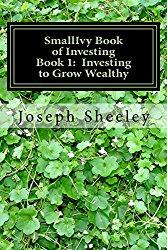This is part of a series of posts for an online class on how to use your investments to fund your retirement. To find other posts in the series, select the category “Retirement Investment Class” under “Retirement Investing” at the top.
Let’s say that you have $2M saved up in your 401k and are ready to retire. Let’s also say that you need about $50,000 per year to live on the first year, with that amount growing with inflation each year. Today we’ll discuss how you would use a set of mutual funds to to generate the income that was needed while keeping up with inflation to avoid outliving your money.
The rule-of-thumb is that you can withdraw somewhere between 3% and 4% of your portfolio each year and have a very good chance of having it last through a 30-year retirement. In fact, the balance could grow under a lot of scenarios. Withdrawing $50,000 per year from a $2M portfolio would therefore be right in line with the guidance, since you could withdraw about $60,000 per year and stay at the low end of the range. You have done well saving and investing throughout your career to put yourself in good shape for retirement.
Ideally you would generate a lot of the income you need for expenses from income producing assets. You would therefore put a portion of your portfolio in an income or a bond portfolio. You would also want a portion of the portfolio to grow and keep up with inflation, so you would want to invest the rest in growth and value stock funds.
Hey – if you like The Small Investor, help keep it going. Buy a copy of SmallIvy Book of Investing: Book1: Investing to Grow Wealthy, buy one of the products shown, or just click on one of the product links and then browse and buy something else you need from Amazon’s huge collection. The Small Investor will make a small commission each time you buy a product through one of our links.
We’ll use Vanguard funds as an example. Looking through their list of funds for income funds, I find the Vanguard Total Bond Market Index fund. This is a fairly safe fund, although the price could decline if interest rates rise or a serious recession occurs that causes several companies to default on their loans. In general, as long as I planned to hold this fund regardless of interest rate changes such that price drops due to rising interest rates would not be an issue, chances are good that I would not have any issues.
It is described at the Vanguard website as: “This fund is designed to provide broad exposure to U.S. investment grade bonds. Reflecting this goal, the fund invests about 30% in corporate bonds and 70% in U.S. government bonds of all maturities (short-, intermediate-, and long-term issues). As with other bond funds, one of the risks of the fund is that increases in interest rates may cause the price of the bonds in the portfolio to decrease—pricing the fund’s NAV lower. Because the fund invests in all segments and maturities of the fixed income market, investors may consider the fund their core bond holding.”
This fund is yielding about 2.5%, so a $1M investment would be paying about $25,000 in interest each year, plus a capital gain from time-to-time.
There is also the High Yield Corporate Bond fund, which is paying about 5.1%, or about $51,000 per $1M invested. This fund is more risky since the bonds it is investing in are low quality, meaning the companies would be more likely to default than they were with the first fund. During a recession, I would see some bigger losses in this fund, so I would want to limit my exposure despite the higher yield. It is described at the Vanguard website as:
“Vanguard High-Yield Corporate Fund invests in a diversified portfolio of medium- and lower-quality corporate bonds, often referred to as “junk bonds.” Created in 1978, this fund seeks to purchase what the advisor considers higher-rated junk bonds. This approach aims to capture consistent income and minimize defaults and principal loss. Although this is a bond fund, high-yield bonds tend to have volatility similar to that of the stock market. This fund may be considered complementary to an already diversified portfolio.”

Find Books at Amazon
I would also look at REITs, which invest in real estate and also generate a reasonable cash return due to the properties in which it invests. The Vanguard Admiral REIT fund is described as:
“This fund invests in real estate investment trusts—companies that purchase office buildings, hotels, and other real estate property. REITs have often performed differently than stocks and bonds, so this fund may offer some diversification to a portfolio already made up of stocks and bonds. The fund may distribute dividend income higher than other funds, but it is not without risk. One of the fund’s primary risks is its narrow scope, since it invests solely within the real estate industry and may be more volatile than more broadly diversified stock funds.”
It is yielding about 4.3%, or $43,000 per year for a $1 M investment. REITs would move around a bit since their value depends on the value of the properties it holds, rents they can charge, and other factors. This portion of the portfolio would also have a growth component since the property values would increase with inflation and as fewer properties were available to buy for a growing population.
You would want your investment mix to be maybe 50% income, 50% growth at 65 years old, so that would leave $1M to invest among these three funds. I would probably put 50% in the safer bond fund, 25% in the junk bond fund, and 25% in the REIT fund. This would result in an income of:
Total Bond Fund: $500,000 invested, income $12000/year
High Yield Bond Fund: $250,000 invested, income $13,000/year
REIT Fund: $250,000 invested, income $11,000/year

Find No-Contract Cell Phones and Devices
Your total income would therefore be about $36,000 per year, so you would be about $14,000 per year short of your income goal. The remainder would need to come from selling stocks off each year, plus a little bit of income from dividends. For stocks I would look at the Large Cap Index Fund, which is paying out about 1.8% per year, the Small Cap Index Fund, which is paying out about 1.4%, and the Total International Index fund, which is paying out about 2.8%. With the remaining $1M I would put about 25% in the international fund, and then put 50% in the large cap fund and 25% in the small cap fund. This would generate income as follows:
Total International Fund: $250,000 invested, income $7,000 per year
Large Cap Index: $500,000 invested, income $9,000 per year
Small Cap Index: $250,000 invested, income $3500 per year
So your total income from your stock portfolio would be about $19,500 per year. Summed together with your bond portfolio, this would equal $54,500 per year in income. Because you are actually generating more income than you needed, you could either reinvest a portion of the income each year into stocks or bonds. You could also cut your bond exposure a little and let more of your money grow at the faster, stock market rates. You could expect a growth rate of about 8% on average from your stocks.

Want all the details on using Investing to grow financially Independent? Try The SmallIvy Book of Investing.
Have a burning investing question you’d like answered? Please send to [email protected] or leave in a comment.
Follow on Twitter to get news about new articles. @SmallIvy_SI
Disclaimer: This blog is not meant to give financial planning or tax advice. It gives general information on investment strategy, picking stocks, and generally managing money to build wealth. It is not a solicitation to buy or sell stocks or any security. Financial planning advice should be sought from a certified financial planner, which the author is not. Tax advice should be sought from a CPA. All investments involve risk and the reader as urged to consider risks carefully and seek the advice of experts if needed before investing.
